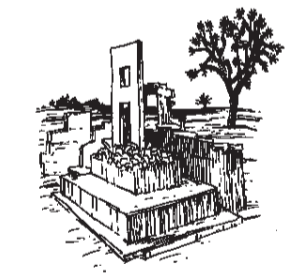EASTWARD HO
If you look at a map of Los Angeles, the sprawling city is like a vast archipelago in a sea of desert, but aside from the occasional meth-lab explosion or cougar attack, Angelenos don’t think about the desert much. It’s too hot, too hard to get to, too weird. We tend to regard the nearby deserts as null spaces, places to cross on the way to Palm Springs, Las Vegas or, heaven forbid, Bakersfield. Subtract all the stolen water, nonindigenous flora, and legions of Latin landscapers, and L.A. would quickly dry up and revert to its natural state. As a result of this chronic dislocation, a lot of us here have lost our relationship with the space we inhabit. We’ve become creatures of an unnatural habitat.
Into this zone, Andrea Zittel has brought High Desert Test Sites, an annual art event that began four years ago when she moved from Williamsburg, New York, to Joshua Tree and started buying up property. Zittel, who grew up around boats and is best known for creating self-contained, highly customized living units, now owns eighty acres of land in the high desert: twenty-five acres surrounding her house to prevent other landowners from developing on top of her, and the rest in parcels located to the north and east of Joshua Tree that she uses as “test sites,” that is, outdoor gallery spaces where artists from around the country can show their work.
HDTS is different from other events of its kind in that the art isn’t fixed in a single location: it’s scattered across Yucca Valley, Joshua Tree, Twentynine Palms, and Wonder Valley. Zittel has created an art scene that challenges traditional conventions of ownership, property, and patronage. She strongly champions the idea that art needn’t belong to anyone, can remain in the environment in which it was created as an ephemeral presence, and eventually enfold itself back into the landscape. Naturally, this kind of art is evaluated and appreciated according to a different set of criteria than those of art-world institutions and galleries. Although HDTS operates outside of any preexisting center, it strives to find common ground between contemporary art and local issues. Chief among them is the interpretation of land use, for, as Zittel quickly discovered, the desert “means” different things to different people.
In the 1930s, homesteaders came to the high desert for the free land and a chance at a new life. Soon, these desert dwellers began to resemble the kinds of plant life that prospered there: tough, prickly and unaccommodating to strangers. For sixty-eight years, the nearly 800,000 acres of Joshua Tree National Park have been a beacon to nature lovers committed to leaving no trace behind—as...
You have reached your article limit
Sign up for a digital subscription and continue reading all new issues, plus our entire archives, for just $1.50/month.
Already a subscriber? Sign in





